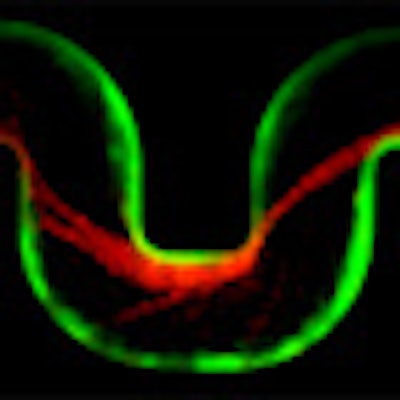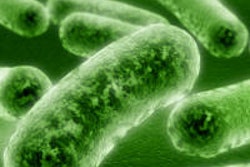
Bacteria flowing through medical devices form biofilms that then trap more bacteria, ultimately creating a net-like barrier that can clog water lines, tubes, and filters much more quickly than previously thought, according to a new study from Princeton University researchers.
The microbes join to create slimy ribbons of biofilm that tangle and trap other passing bacteria, creating a full blockage in a startlingly short period of time, according to researchers from Princeton University (Proceedings of the National Academy of Sciences, February 11, 2013).
The finding could help shape strategies for preventing clogging of devices such as stents, water filters, and other items that are susceptible to contamination, according to the study authors.
Using time-lapse imaging, they monitored fluid flow in narrow tubes or pores similar to those used in water filters and medical devices. Unlike previous studies, the Princeton experiment more closely mimicked the natural features of the devices, using rough rather than smooth surfaces and pressure-driven fluid instead of nonmoving fluid.
 Over a period of about 40 hours, bacterial cells flowed through a channel, forming a green biofilm on the walls. Over the next 10 hours, researchers sent red bacterial cells through the channel that became stuck in the sticky biofilm and began to form thin red streamers. Once stuck, these streamers in turn trapped additional cells, leading to rapid clogging. Image courtesy of Knut Drescher, Princeton University.
Over a period of about 40 hours, bacterial cells flowed through a channel, forming a green biofilm on the walls. Over the next 10 hours, researchers sent red bacterial cells through the channel that became stuck in the sticky biofilm and began to form thin red streamers. Once stuck, these streamers in turn trapped additional cells, leading to rapid clogging. Image courtesy of Knut Drescher, Princeton University.The team of biologists and engineers introduced a small number of bacteria known to be common contaminants of medical devices. Over a period of about 40 hours, the researchers observed that some of the microbes -- dyed green for visibility -- attached to the inner wall of the tube and began to multiply, eventually forming a biofilm.
Over the next several hours, the researchers sent additional microbes, dyed red, into the tube. These red cells became stuck to the biofilm-coated walls, where the force of the flowing liquid shaped the trapped cells into streamers that rippled in the liquid like flags rippling in a breeze. During this time, the fluid flow slowed only slightly.
At about 55 hours into the experiment, the biofilm streamers tangled with each other, forming a net-like barrier that trapped additional bacterial cells, creating a larger barrier which in turn ensnared more cells. Within an hour, the entire tube became blocked and the fluid flow stopped.
"For me, the surprise was how quickly the biofilm streamers caused complete clogging," stated study author Howard Stone, a professor of mechanical and aerospace engineering at Princeton, in a press release. "There was no warning that something bad was about to happen."
By constructing their own controlled environment, the researchers demonstrated that rough surfaces and pressure-driven flow are characteristics of nature and need to be taken into account experimentally. The researchers used stents, soil-based filters, and water filters to prove that the biofilm streams indeed form in real scenarios and likely explain why devices fail.
The work also allowed the researchers to explore which bacterial genes contribute to biofilm streamer formation. Previous studies, conducted under nonrealistic conditions, identified several genes involved in the formation of the biofilm streamers. The Princeton researchers found that some of those previously identified genes were not needed for biofilm streamer formation in the more realistic habitat.



















